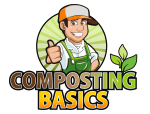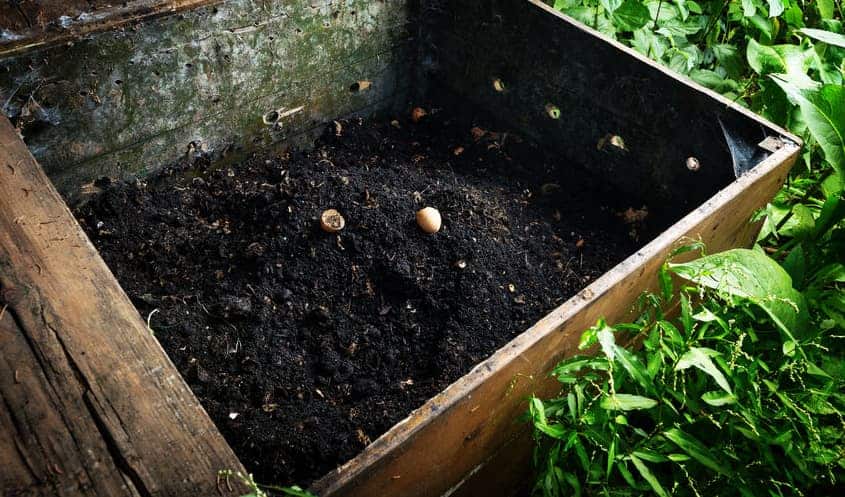Weather you are composting as a necessity for growing vegetables and other farming to provide for your family or you are doing it as more of a hobby, knowing when your compost is ready to use in the garden is an important piece of information to have.
Compost is ready to use when it looks very dark, has a soil like consistency, and will have a good, earthy smell to it.
Getting to this point is easy and can be done in a relatively short amount of time as long as you follow the good composting guidelines I have provided throughout compostingbasics.com
For now, lets take a closer look at how to recognize when your compost is finally ready to use.
Why does it matter if the compost is ready?
Having good finished compost that has finished breaking down completely is vital for your lawn and garden for several reasons.
1. There are no bad parasites or disease left from the organic materials to contaminate the garden. When you properly compost your grass clippings, kitchen scraps and garden clippings you greatly reduce the chance of any bad parasites and bacteria ending up on the good plants that can harm you or your plants. Composting, especially hot composting eliminates most of theses.
2. Finished compost won’t burn your plants. If you end up throwing half composted materials into your garden you may run the risk of burning the roots or stems of the fragile vegetables. When compost breaks down it generates heat. If there is enough of it or it is taken out of a compost pile while it is very active it can be hot enough, temporarily, to actually burn the stems or leaves. Temperatures of an active compost pile can reach up to 170 degrees F.
3. The Good bacteria is throughout the compost. Having a hot compost pile create your compost not only gets rid of the bad parasites and microorganisms, it also takes out a lot of the good ones as well. Using compost at this stage could also mean that it will draw the good bacteria temporarily from the soils surrounding and aiding your plants while they try to populate the new composted soil that is still void of any life.
While putting some unfinished compost throughout your garden may not always hurt it, it is always a good practice to only use completed compost as a safe bet.
What does unfinished compost look like?
Unfinished compost will very obviously look unfinished. If there are any problems with the composting process such as the lack of oxygen in the pile or that there is too much or too little water throughout this will cause the materials to react very differently and not break down properly. You can find out about the things that can go wrong at the Why Does My Compost Pile Stink page.
In a compost system that is working properly, unfinished compost will appear in stages. Obviously when the items can still clearly be identified, and the various colors of the original organic materials are still clearly there, the compost is not anywhere even close to being finished.
IF the materials are all closer to a dark brown and starting to have some soil like similarities, it is getting there but still not ready.
If you use a compost thermometer, which I highly recommend, you can keep an eye on the temperature. If the core is still warming up, it is not ready to use and is therefore unfinished.
If any of these characteristics are still showing up in your pile just mix it up again and let it be for a while longer.
What does finished compost look and smell like?
Now, differentiating between finished and unfinished compost is pretty easy and once you’ve done it a few times you will learn to tell exactly when the compost is ready for use.
Completed compost will not have any familiarity to its previous forms such as grass clippings, kitchen scraps or anything else that originally made up the pile. Compost should have a very dark brown to black look to it. If you run it through a screen in the end it will have the consistency of fluffy soil and it will have an almost sweet, earth like smell to it. It will smell good and not like it is rotting or putrid.
Now, there are some circumstances where the compost is almost complete and therefore good enough to use where there is no chance that it will do harm to the garden and the material that does remain will break down naturally in the garden and not effect the health of the plants or soil it is mixed with.
Now with virtually every compost pile there will always be little bits of sticks, corn cobs or other materials that have not completely broken down even though the rest of the pile is ready to rock. These items can just be reconstituted into your next compost pile and allowed to break down for the future.
Using a screen or sifter for your finished compost is a great way to help ensure that you are only using the best finished compost. Theses screens can be made at home with items from the home store or you can purchase a good one online. See more information about the best screen for your situation at the resources page.
Can you use finished compost right away?
So your pile has just entered the “complete” stage and your eager to use it. Can you? Well, it depends on the method you used to create the compost and what’s going on inside.
Like mentioned earlier if the compost looks finished and smells finished but is still giving off heat on the inside or when turned over, you shouldn’t use it right away.
Also, if you have been keeping an eye on the temperature and it is finally cooled down to the point that it is close to the outside air temperatures you may also want to wait a few days to allow the good microbes, bacteria and worms to work their way into the mix.
Tips to perfect compost
Once you get used to what finished compost looks like you will have no problems creating several good batches of it each year using the best composting practices. Here are a few tips to help you get to your goal.
- Only use organic materials such as grass clippings, fruit and vegetable scraps, garden clippings, sawdust and small branches.
- Keep the right mix of greens to browns mix. Usually around a 50/50 mix and your good.
- Keep the moisture in the pile at an optimal level. This means that if you were to grab a handful of material from the pile it should feel damp and stay loosely together if you squeeze it. If water starts to pour out, it is too wet.
- Keep it hot. Mix over the ingredients that make up your compost and allow them to break down in the center of the pile. This is where the action takes place. Once it begins to cool down, turn it over again.
The hot compost pile method works best on piles that are about 3 feet by 3 feet by 3 feet or larger. - Screen the finished materials. When you have enough composted material in the pile you can begin to remove it and use it in the garden. Using a sifter or screen will allow you to get the best, broken down material for the garden and allow you to put the rest back into the compost for further

